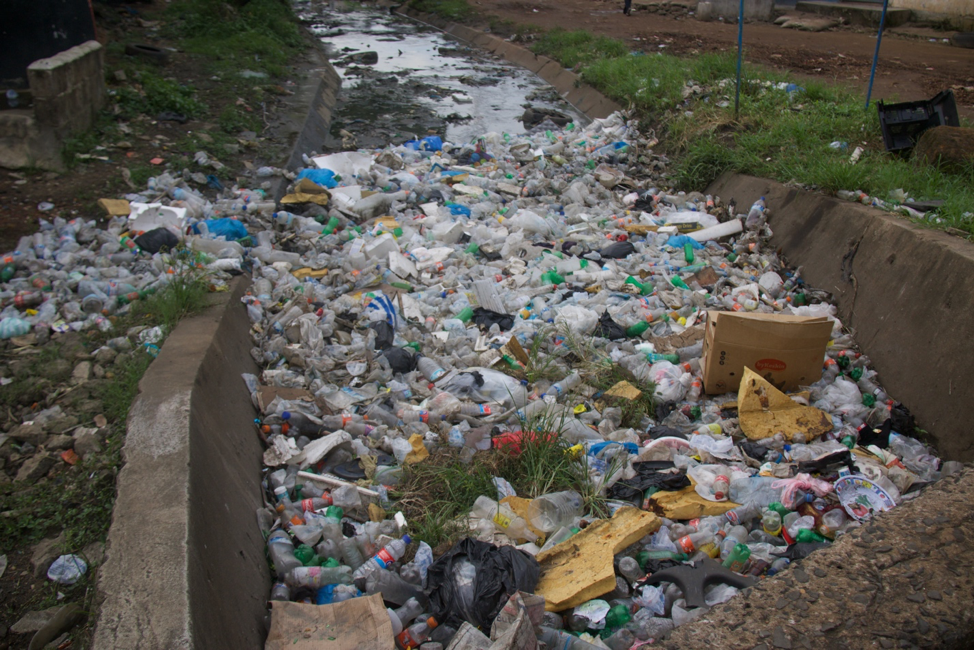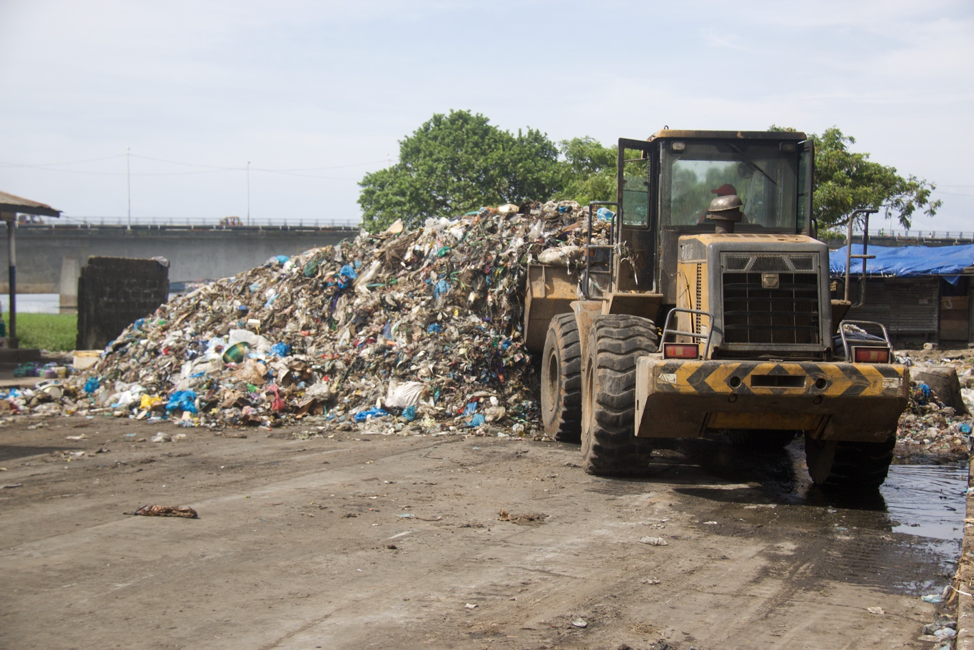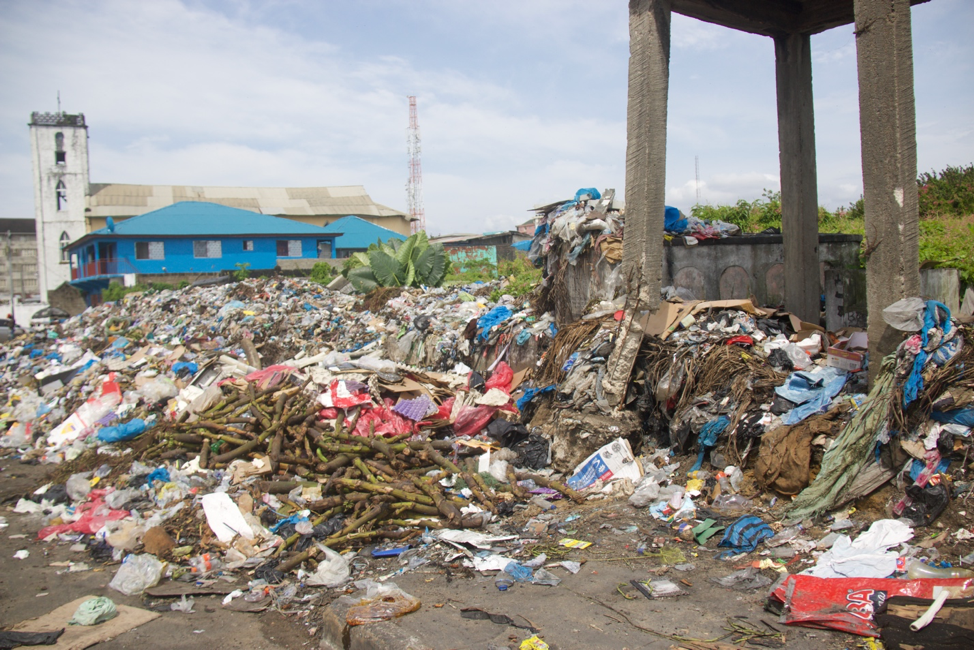Banner Image: An employee of the Monrovia City Corporation removes a huge pile of overstayed garbage in Monrovia. The DayLight/Tom Portland
By Gabriel Dixon
MONROVIA – Recently, the Head of the European Union Delegation in Liberia, Ambassador Laurent Delahouse came under heavy criticism for a statement he made at the Monrovia City Forum on Solid Waste Management earlier this month. In brief remarks at the event, Delahousse said, “Monrovia is the dirtiest city of the many places I have visited in my work in Africa.”
Delahousse retracted his statement and apologized. But it has sparked out heated debate on the sanitary condition of a city, like many urban parts of the country, which has been dirty for decades.
While some consider the envoy’s statement as negative branding of the government of Liberia and a statement outside of the normal euphemism of public diplomacy, exploring the background of his statement and facts associated with waste management in the municipality of Monrovia could re-energize new strategies and a system-approach for efficient and effective waste collection and disposal in the sector, some experts say.
The DayLight has carefully analyzed four facts on garbage collection and disposal associated, which show the city is dirty.
Poor Collection and disposal Mechanism

Monrovia is home to more than 1 million people, who produce close to 800 metric tons of solid waste per day. That means Monrovia alone creates 292,000 metric tons of waste every year. However, only 45 percent or 360 metric tons of waste is collected mainly by the Monrovia City Corporation and small and medium enterprises (SMEs) operating in the sector. The remaining 55 percent or 440 metric tons is uncollected, leading to huge piles of garbage at market places, street corners, empty lots and the backyards of residences.
Inadequate Budgetary Support

Under Pillar Two of the Pro-poor Agenda for Prosperity Development (PAPD), the government of Liberia identified key challenges in the waste and sanitation sector and promised to have equitable, safe, affordable and sustainable water supply and sanitation services for all Liberians by 2023. However, in President George Weah’s budget message to the National Legislature on July 14 last year, recurrent expenditures dwarfed public sector investment projects (PSIP) by 90 percent against 10 percent of a budget of US$518 million. So, for every US$10 that the government spent on the economy from June 2020 to May 2021, US$9 went towards salaries, office desks and chairs, generator and vehicle fueling, etc, while only US$1 went towards core projects including garbage collection and disposal in the city of Monrovia. This fact is further supported by the government’s Mid-year Disbursement report on the administration and municipal government sectors for the fiscal year 2018/19 and 2019/2020.
Our analysis of the budget of the MCC over the last three years shows that a little close to US$11 million USD was allocated to the city government. However, the outlay of the MCC’s budgets from 2018 to 2021 reflects the dominance of recurrent expenditure as depicted in the national budget. For example, from 2018 to 2021, things like salaries, furniture, and other items not used in generating income by the city government amount to US$10,024,822. which is 92 percent of the MCC budget for the last three years. Equipment rental, refuse collection and operational expenses amount to US$573,672 or 5.25 percent of the budget.
Structural Limitation and Ineffectiveness

The solid waste management system of the MCC basically comprises two layers: primary waste and secondary waste collection. The first layer consists of small and medium-sized enterprises (SMEs) and community-based enterprises (CBEs) that are involved with door-to-door garbage collection. The second layer involves the MCC and its sub-contractors.
However, because of the lack of a clearly defined demarcation or zonal restriction for SMEs and CBEs, there is often confusion on which structure should be operating where and at what time. This confusion is also contributing to the ineffectiveness of the system that is affecting the collection and disposal mechanism of the MCC.
This fact is supported by one research published in the Journal of Solid Waste Technology and Management, where it was established that 50 percent of Monrovians dispose of solid waste either by burying them in their backyards, open burning, dumping them in rivers and swamps or by the help of scavengers.
Another research report by the World Bank in July 2019 further details the structural limitations such as inefficiencies with contractual models with CBEs, lower level of trust between citizens and CBEs, and poor communication as challenges the waste and sanitation sector headed by the MCC needs to address.
Limited recycling Mechanism and Incentives

About 70 percent of solid waste generated in Monrovia is recyclable, organic waste. However, recycling is a challenge as many of those involved with pocket-recycling are small businesses or NGOs who often face resource constraints. Efforts to improve local waste management through projects like the Solid Waste Management project (SWM), led by Cities Alliance, has made a little impact due to issues like the lack of an effective and efficient integrated solid waste management plan by the government of Liberia as well as the lack of incentives for CBEs in the sector.
There is also the issue of scarce technical capacity and technologies required to encourage entrepreneurial ventures in the waste and sanitation sector of Liberia.




